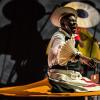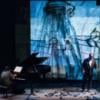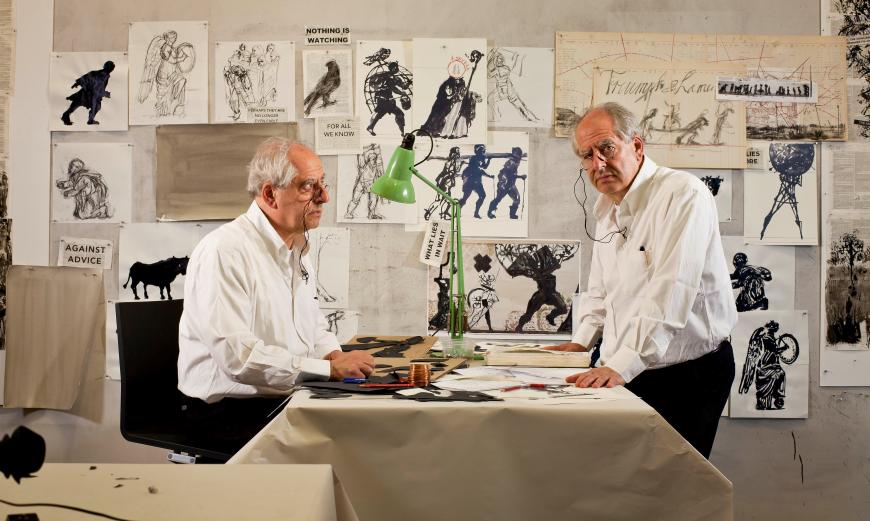
The output of South African-born artist William Kentridge — prints, drawings, sculptures, animated films, and opera productions — is, in a word, staggering. Now 67, Kentridge is not only the subject of a major exhibition at The Broad in Los Angeles (In Praise of Shadows, on view through April 9), but he’s also been in residence at UC Berkeley during the entire 2022–2023 season, courtesy of Cal Performances. That Berkeley residency kicks into high gear this month with lectures, livestreamed classes, and a retrospective of his film and filmed opera works; over the years, Kentridge has mounted darkly witty, highly praised productions of Mozart’s The Magic Flute and Dmitri Shostakovich’s The Nose, among other operas.
But the crown jewel at Cal Performances is the U.S. premiere of Kentridge’s chamber opera Sibyl, which runs March 17–19 at Zellerbach Hall. Presented in two parts, Sibyl is inspired by the Greek myth of the Cumaean Sibyl, the human struggle to know the future, and our vulnerability before powers and technologies that obscure that knowledge. With a libretto of suggestive phrases — “There will be no epiphany.” “Wait again for better gods.” — that Kentridge gathered from different sources, plus a cast of nine singers and dancers interacting with an idiosyncratic stage design and music composed by Nhlanhla Mahlangu and Kyle Shepherd, the 40-minute, six-scene work has already been hailed as another tour de force in a career that has been rife with masterpieces.
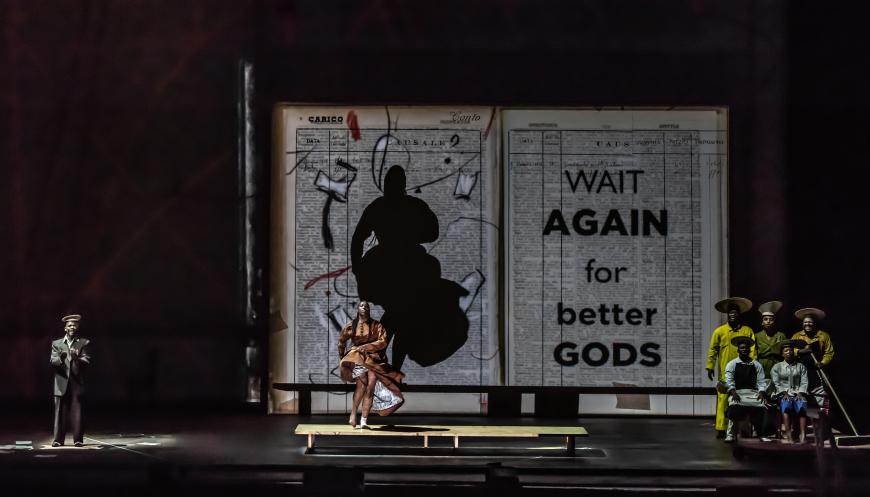
Its genesis reveals Kentridge’s incessant and ever-inquisitive view of the world. While he was residing in Rome in 2018, where he was directing a production of Alban Berg’s Lulu at the Teatro dell’Opera di Roma, the company commissioned him to create a companion piece for its 50th-anniversary revival of Alexander Calder’s theatrical production Work in Progress. Calder’s rotating mobiles gave rise to Kentridge’s idea of chaos morphing into coherence and then back into chaos again, which then became the core of Sibyl, along with the perception of prophecy in today’s culture.
“Obviously, we rely on predictions of the future,” said the indefatigable Kentridge in an audio-file response to emailed questions. “Nowadays, we often find them in scientific ways rather than just prophecies. To know the weather, we just look at our phone, and there’s a prediction of what the weather will be the next day. In so many ways, algorithms, which take statistical examples of peoples’ desires and habits and are based on these generalized predictions made for specific people, are a kind of electronic form of prophecy, different from the Greeks’ way of examining the entrails of birds and fowls.
“You would go to the sibyl,” added Kentridge, “with questions of your life. ‘How long will I live? Will I survive COVID? What does my future have in store for me?’ You would write your questions on an oak leaf and put the leaf at the mouth of her cave. And she would write the answers on another oak leaf and put that oak leaf at the mouth of the cave. But, as you went to collect your leaf — the answer, your future — a wind would spring up, and all the leaves at the pile would swirl around.
“So,” Kentridge pointed out, “you could never tell if the leaf you were picking up was your leaf or the fate was your fate that you were getting. That was, I suppose, the central metaphor of Waiting for the Sibyl [the title of Kentridge’s project at Rome Opera].”
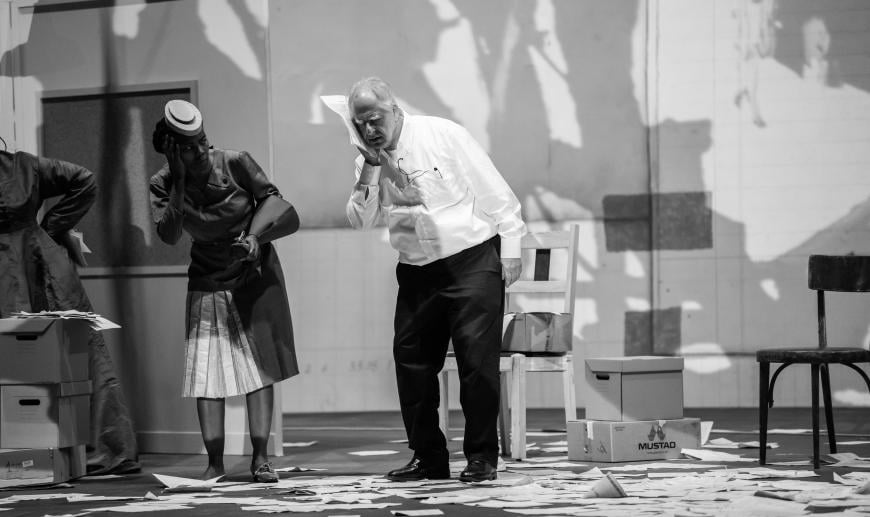
And so began a collaboration that involved a host of artists. Kentridge’s process is both collaborative and improvisational, the latter, he pointed out, “a necessary stage for me in all the making of different theater productions. It works on the basis [that] you have a starting idea for a scene or an image or a movement, but it’s when it’s tried out in the real world, when you see it onstage in front of you, [that you realize] very often your first idea is less than wonderful. But there are many things that you [can] catch at the corner of your eye or a moment within a performance that you feel.
“And when I say you feel,” Kentridge emphasized, “you feel it in your muscles. You feel it instinctively as you watch it with the intake of breath or a leaning forward. Your body tells you what the interesting parts are, and then it’s a question of trying to track those down, to repeat them, to learn the grammar of what these improvisations are and allow that to govern part of either the drawing or the film or, in this case, the opera that one is making.”
For the music for Sibyl, Kentridge invited Nhlanhla Mahlangu, a renowned choral composer, singer, dancer, and choreographer, and Kyle Shepherd, a trailblazing South African jazz pianist and composer, to work with him. The latter, also credited as the project’s music director, contributed original improvisations that complement and serve as a modern counterpart to Mahlangu’s traditionally rooted vocal music, which also led the pair to translate several phrases into African languages, including Zulu, Xhosa, and Sesotho.
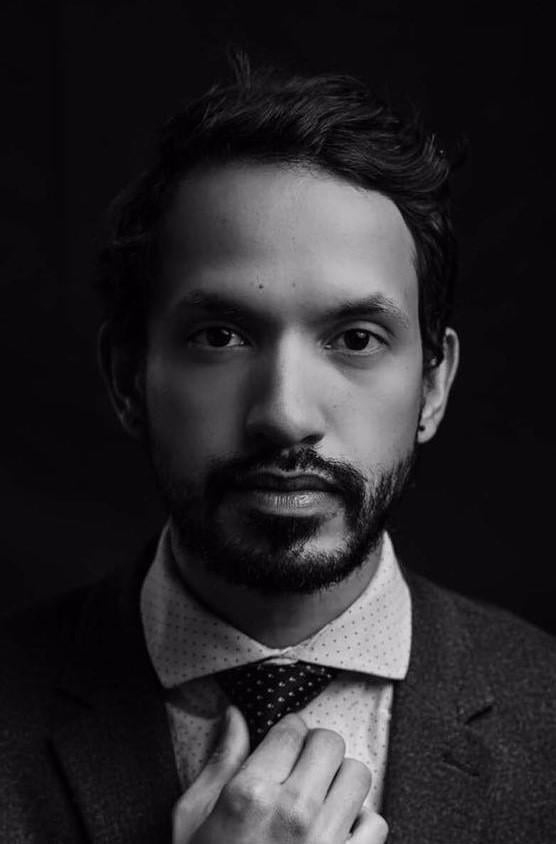
In a WhatsApp call from Johannesburg, South Africa, Shepherd, 35, said that he jumped at the opportunity to work with Kentridge, a man he considers one of the “great thinkers, great masters of our time. It was a no-brainer, of course,” he continued, “and I was also very fortunate to work with Mahlangu. I hadn’t known him and met him through the process of realizing Sibyl.
“The conversations in the early days [were] something we were both excited by,” Shepherd recalled. “And since my musical home is improvisation and jazz, we chose not the easy route to take. That can change and evolve and develop with every experience, but when it happens and it’s good, it’s good, but that’s the chance you take.”
Shepherd went on to say that Sibyl, which has been performed to rapturous audiences in cities including Stockholm, Paris, and London, where it was recently nominated for two Olivier Awards, incorporates and encapsulates all of his musical interests. “There’s a lot of South African jazz, and we also use the forms of this traditional music, juxtaposing improvisation on top. I feel very at home with all the sounds, particularly in two or three of the curtain [scene] changes.”
Stressing that those moments are logistical, Shepherd added, “As the set needs to change, you don’t want to hear chairs clattering, so the solo piano takes over in those moments. We chose that direction because it’s the way William likes to work, with an element of surprise. That was something we were both excited by. And that can change and evolve and develop with every experience.”
As a prelude to Sibyl, the evening begins with a 22-minute Kentridge film, The Moment Has Gone, which, as much of his work does, addresses his homeland’s legacy of colonialism and apartheid, with some of these ideas reappearing in the chamber opera. “It’s just the piano, video, and four male singers,” said Shepherd, whose job of music director, he added, “is sometimes to stay out of people’s way as much as possible — to let expression come through.”
Shepherd also gave kudos to the strong cast, mentioning that everyone involved is a project leader “in their own right. If you think of a film director and an A-list cast, sometimes you have to stay out of the way, [giving] some direction here and there. But William is the chief director, and he stays out of the way most of the time but chooses key moments to [participate]. Maybe that’s our process,” Shepherd noted with a laugh.
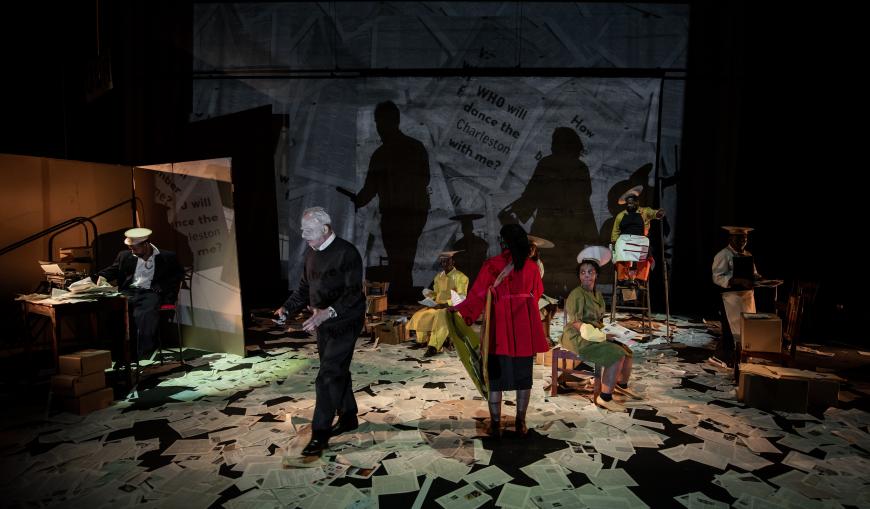
And while the music, dance, costumes, and hand-painted set design by Sabine Theunissen — animated ink drawings, swirling projected text, and shadow play — contribute to the monumental scope of the opera, the libretto is a fascinating assemblage of words that are compelling and enigmatic in their own right.
Explained Kentridge: “I’m not a writer, I’m not a poet, so what I rely on are finding phrases and fragments in different peoples’ writings that stand out for me. I have a collection of phrases, of words, of proverbs, of pieces of texts from poets, in translation usually, and these I would write down and then cut up and rearrange.”
Kentridge elaborated, noting that he works with between 150 to 200 phrases, trying to see what they suggest and what their groupings can be. “That’s the way the libretto of the opera was arrived at. Some of them are like riddles which don’t quite have an answer but which would hover at the edge of meaning, and others are clearer. I would say of the phrases in the libretto, maybe a quarter are mine, but those are certainly the least interesting 25 percent of the phrases that are read by an audience. So, the singers are singing versions of translations of those texts, which are projected on the screen.”
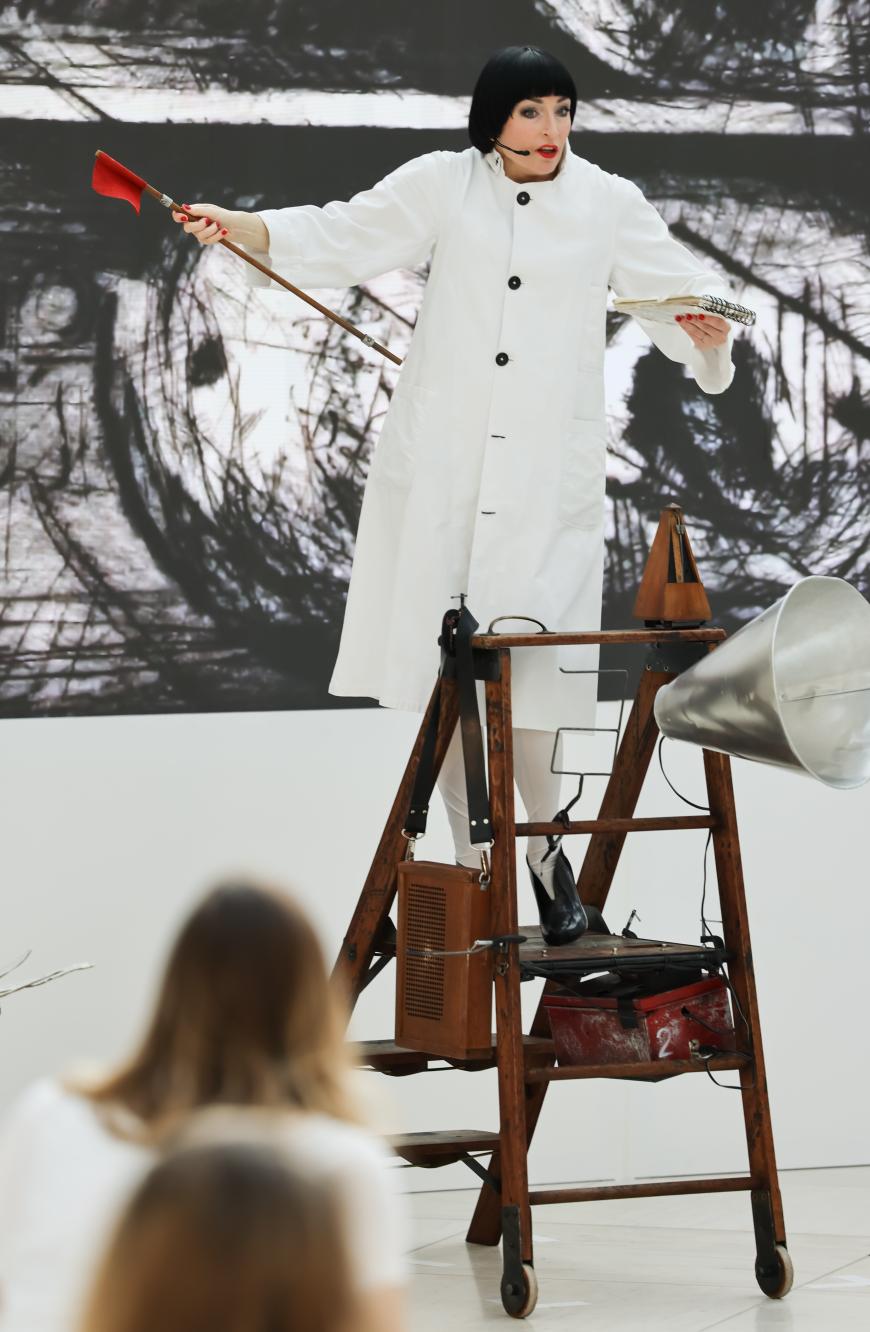
Also making use of words is the Australian-born, Berlin-based soprano Joanna Dudley, who plies her art internationally as a director, choreographer, and installation artist. She’s been working with Kentridge for nearly a decade, having met him through another Kentridge collaborator, South African composer Philip Miller. As part of the Berkeley residency, Dudley will perform A Guided Tour of the Exhibition: For Soprano and Handbag, a solo work that combines live art, drama, film, and sculpture as she conducts an immersive exhibition tour that challenges the senses, on March 15 at Zellerbach Playhouse.
Reached by WhatsApp in Tanzania, Dudley said she was excited about the upcoming gig, having performed the 50-minute work in cities including Paris and Copenhagen. She and Kentridge devised Tour after Dudley appeared as a silent invented character in the 2015 premiere of the Kentridge-directed staging of Lulu at the Metropolitan Opera, a triumph that then-New York Times critic Anthony Tommasini described as an “ingeniously structured, grimly beautiful work, especially in this stunning and searing production.”
Recalled Dudley: “William was having an exhibition in Berlin at Martin-Gropius-Bau, and he didn’t want to fall into the trap of having to explain his work too much to people. He asked me if I would be the guide, and I thought it sounded like a wonderful idea. We started with maybe 20 pages and a very Dada-like text because he loves playing with language and poetry.
“Then I began improvising as a vocalist and actress, and it was really fun. The tour starts off almost normally and quickly starts spinning out of control, and you sense something is happening. I start off as a guide, and toward the end I become part of his artwork. It exists in two forms. One is where I take people through an [actual art] exhibition, and another form is when I’m in front of a screen and giving a lecture.”
As for the handbag Dudley sports, she said that it’s actually a speaker. “It’s a lovely wooden box, and it doesn’t matter where I am; people will hear my voice slightly amplified and with nice effects. It’s a beautiful prop.”
Pointing out that she’s onstage with “lots of fantastic films of William’s,” Dudley also noted that “you get through the material quicker than you would in a museum. We’ve added some beautiful stories written by Russians, including one by absurdist poet, writer, and dramatist Daniil Kharms and some text from Georg Büchner’s Woyzeck. It’s something special and is a lovely look at the history of William’s work.”
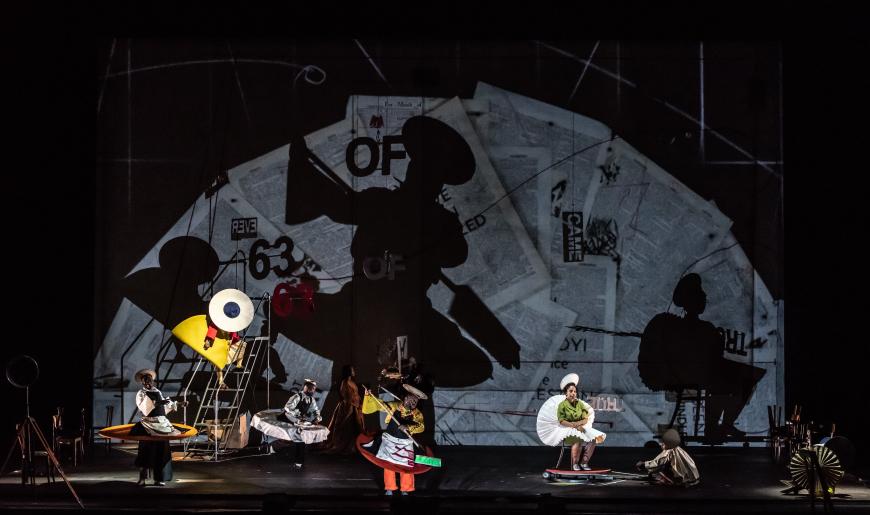
With Sibyl now firmly established in the Kentridge canon, he writes in his program notes that “our current oracle is the algorithm” and that, while we want to avoid it, “we are, nevertheless, beholden to it.” A perceptive, politically engaged artist, Kentridge added in his audio response that “we have this completely paradoxical relationship to the algorithm. We want it, but when it gives us an answer we don’t want, we feel very oppressed by it. As we should, because the principal of the algorithm is authoritarianism; it takes the statistical probabilities from a very large number of people or a very large number of examples and from that makes a prediction, which is then applied with great violence upon the individual.
“So even if we don’t fall in the paradigm,” continued Kentridge, “that’s what the algorithm offers us. And, as you know, in many cases the algorithm is trusted more than a person’s human opinion, such as in the medical field, [where] they find that it’s far more accurate. The number of wrong diagnoses made by the algorithm is much lower than the wrong diagnoses made by medical experts, who have their long experience to both get things wrong and right.”
This might sound excruciatingly depressing to some, but Kentridge is actually of a more optimistic mind, an attitude he finds in the “act of making. I think that’s the key thing for me — to put something on the paper and not walk away from the blank sheet — to not leave the stage empty. This belief in other people seeing what we have seen, it must be reinforced by other people looking at us, and there’s also something about the public view — multiple views, several eyes sitting in an audience watching the same thing together — that gives a solidarity, a sense of community in that moment.
“And I think the optimism is in that, rather than everyone makes a happy or sad piece of theater. Whether it’s a tragedy or a comedy, the optimism lies in the activity of making. And that I’m very sanguine about. There’s so many people who want to make [theater], maybe not as many people who want to watch, but enough.”
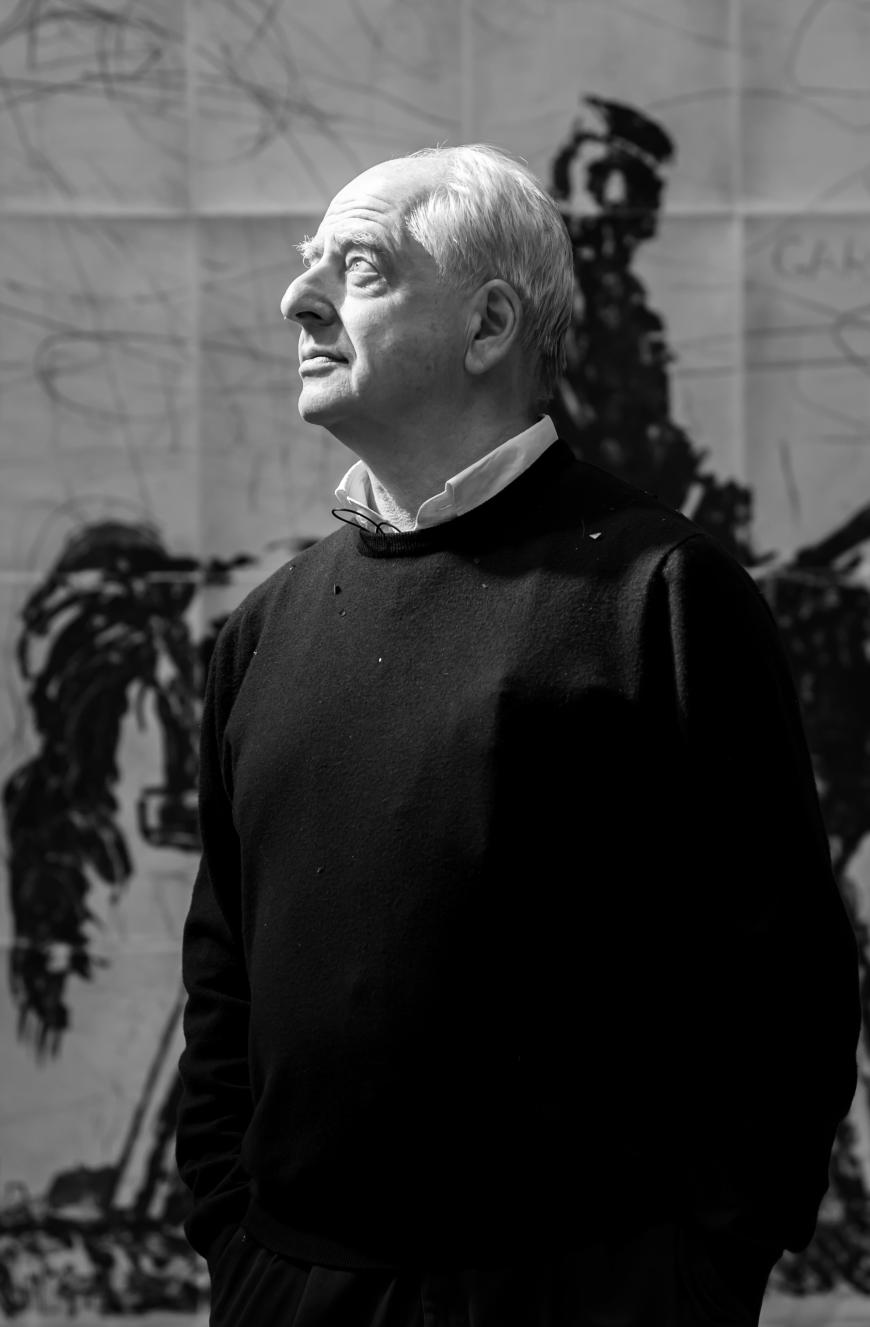
One can’t help but wonder, then, if Kentridge’s optimism extends to the state of contemporary art and opera.
The maker didn’t mince words. “Contemporary art is in the anomalous position it is in that it has become a mass-audience activity. Paradoxically, this may well be because of the amount of money that flows from the contemporary art world, not so much in public institutions but in private foundations, galleries. We live in such a monetized world, where value and money go so closely together, where the acceptance of monetary value is the same as substantial value. There’s certainly, I think, more contemporary artists than ever before, and more of them making a living from it than ever before.
“But in opera,” continued Kentridge, “it’s much harder. One has a sense of the grand opera houses struggling to keep [their] audiences, struggling to find new audiences to see the old repertories. One of the things that does is give them more courage. So, I think there are more contemporary operas being commissioned by opera houses than before, even though all of the major opera houses rely on their bread-and-butter top 50 operas written over the last 300 years to keep themselves going, and new operas are a rarity.
“But I also think there are many other new forms of opera that don’t necessarily rely on an 80-piece orchestra and a 90-[person] chorus and all of the machinery of the big opera house. Having worked both with full-scale operas in grand opera houses doing classic productions like Mozart’s The Magic Flute or Berg’s Lulu or Shostakovich’s The Nose, there is a pleasure in making something from scratch, from the ground up, in which the music and the dramaturgy and the visual imagery all grow together, rather than just taking an existing libretto and score and finding something that is both familiar and new.”
Kentridge admitted that he wasn’t sure where the operatic form was going but remained hopeful that “smaller and different operas find a space to happen. There’s something about an opera and the combination of text and music in which straight and deep emotion can be expressed without the usual self-ironizing that, certainly in the Anglo-Saxon world, we need to accompany any statement or demonstration of emotion.
“There’s a way in which music gets into us,” Kentridge opined, “gets into us in the sense that we feel it throughout our bodies, not just as an academic appreciation but something we can’t resist. We should make this decision that there’s no possible way that operas cannot continue to be of such nourishment to all of us.”


